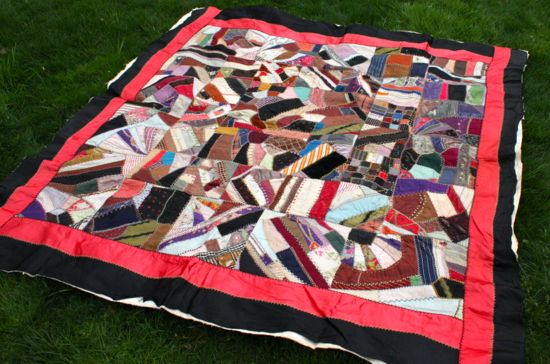
Back in the early-mid 1990s, my grandmother gave me a quilt top, since I was into quilting. I think she may have picked it up at a garage or estate sale, but I don't know for sure.
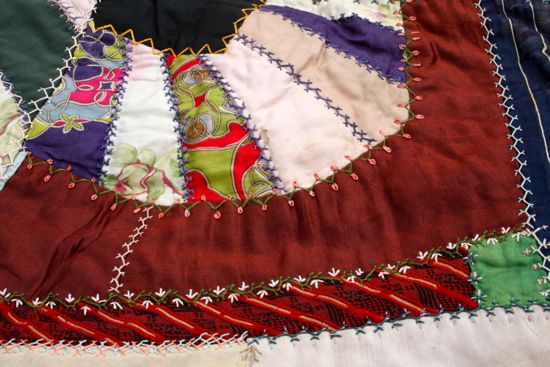
It's a traditional crazy quilt, with hand-embroidery around the edges of every single piece of fabric. The time and love that went into making this is a bit mind-blowing.
The fabrics are all over the map, but they tend toward the satin, silk and velvet. Some of them look like they started life as ribbons.
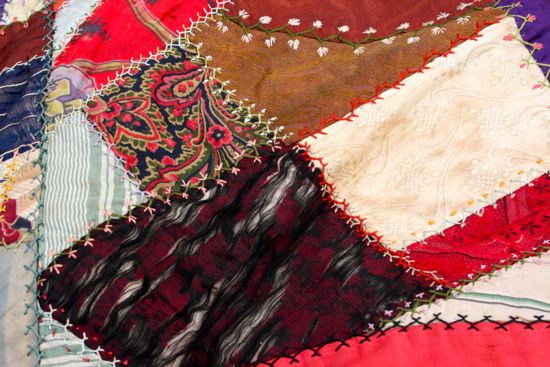
Not all of them have held up so well.
And unfortunately, I'm not enough of fabric historian to have any real clue as to the age of this quilt top. Some of the prints make me think of the 1960s, but I could be way off.
The crazy blocks were assembled onto backings of less delicate material, most of it tea-colored, with a layer of batting between. It feels like cotton to my fingers but I suppose it might be wool. The blocks are hand stitched together, with the seamline covered in embroidery.
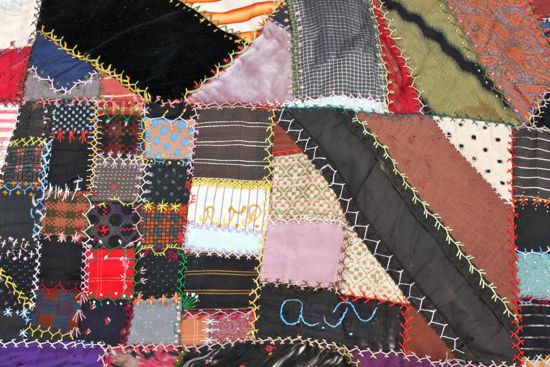
The amount of embroidery in this is staggering - have I said that already? The block on the left here looks a little postage-stamp-y.
A number of the blocks are signed, again with embroidery. Maybe this one is "Lee McKee"?
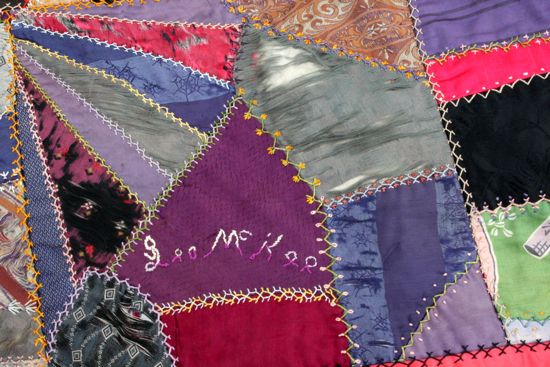
Other names:
L.M. Mc.
A.T.
R.T.P.
R. T. Pettenger
I.F.P.
E. M. Pettenger
Wesley Pettenger
W.J.P.
L.D.P.
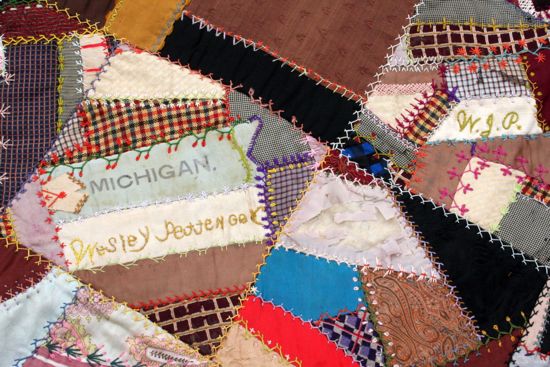
I can't begin to guess if this Michigan ribbon is a reference to a school or to the state. Maybe a fair? Was this quilt made in Michigan? By people from Michigan who had left and were homesick? What was the occasion for the quilt? What stories are in these fabric choices?
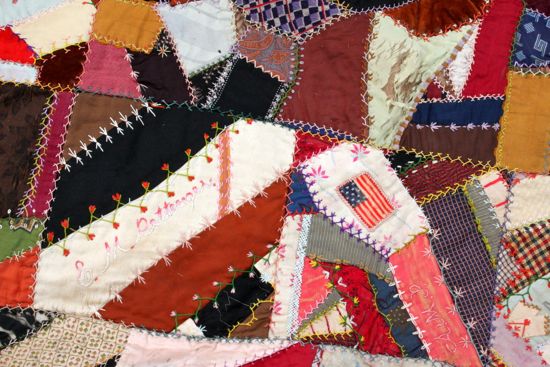
Or in the inclusion of this small American flag?
This quilt is unfinished and a bit care-worn. But despite my grandmother's gifting intentions, it's not really my style and I'm unlikely to mend this one or give it any love. I'm admitting this after carting it around for 16 years and doing nothing but keep it safe and dry.
Could the blogging-quilting community help out here? Anyone know any Pettengers who might be related to this quilt? I know lots of us are more "modern" quilters, but does anyone know anyone who has the skills and inclination to mend/restore/finish this quilt? Barring that, does anyone have any recommendations for an appropriate donation destination, a historical society or quilt museum?

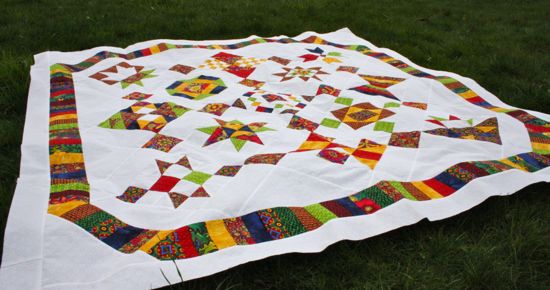
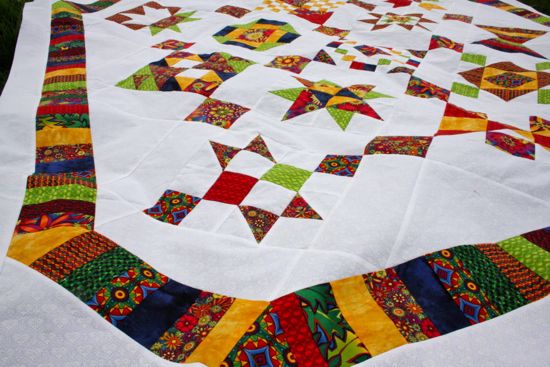
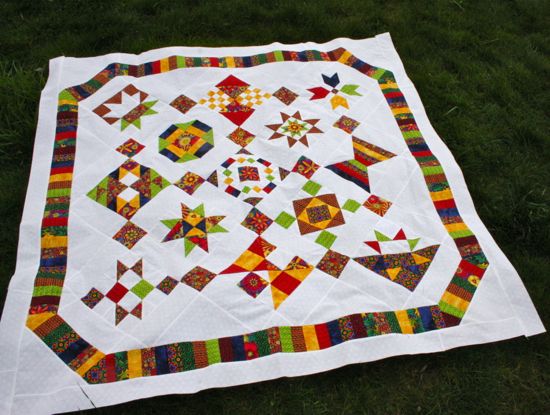
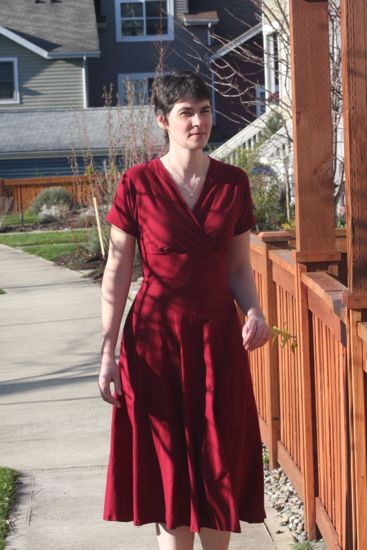
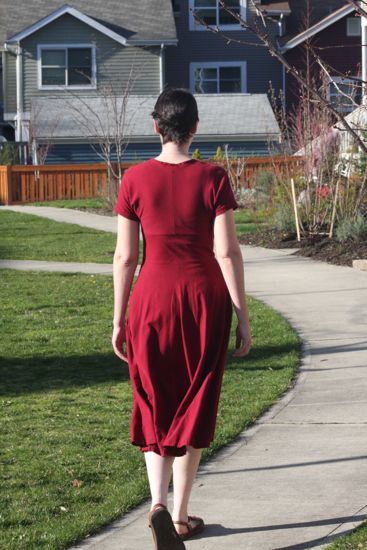



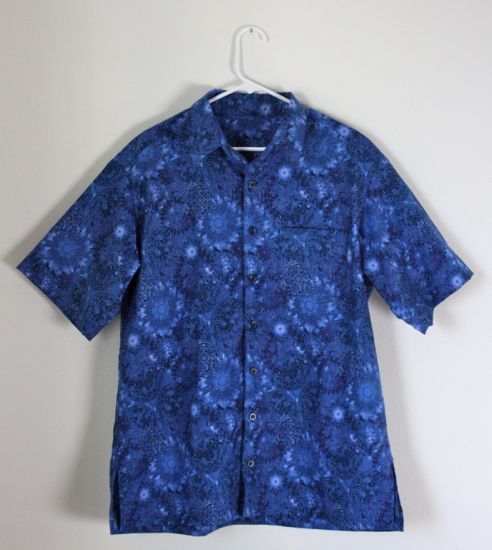
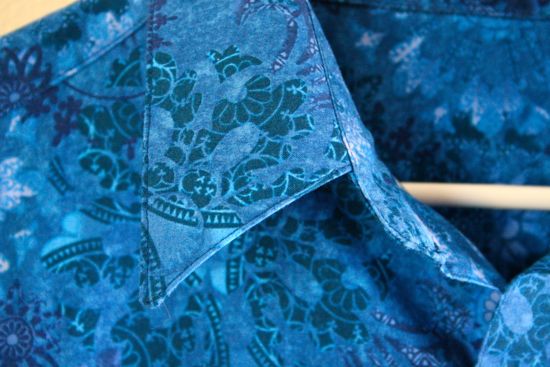
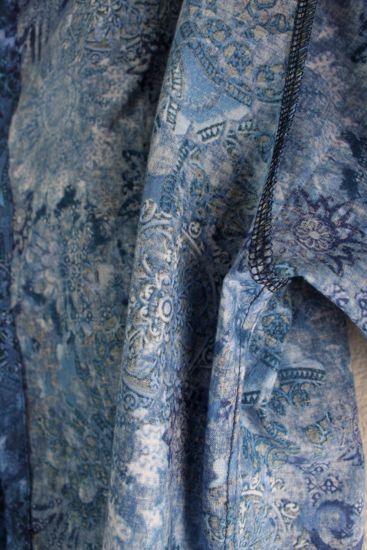
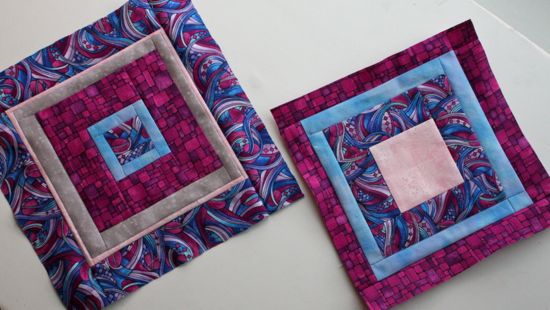 This block is a variation on the traditional Log Cabin block. Kinda a bummer that it has such a ho-hum name, I think; other log cabin variations include Courthouse Steps, Pineapple, Bricklayer, and Housetop. But "Square in Square" is an accurate, if not terribly poetic, description. It's a super simple block to make, with lots of room for customization.
This block is a variation on the traditional Log Cabin block. Kinda a bummer that it has such a ho-hum name, I think; other log cabin variations include Courthouse Steps, Pineapple, Bricklayer, and Housetop. But "Square in Square" is an accurate, if not terribly poetic, description. It's a super simple block to make, with lots of room for customization.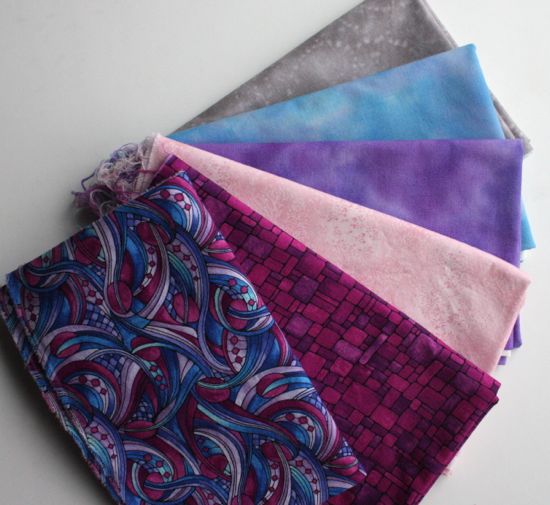 Here's the fabric I'm using. Starting from the gray and working up:
Here's the fabric I'm using. Starting from the gray and working up: 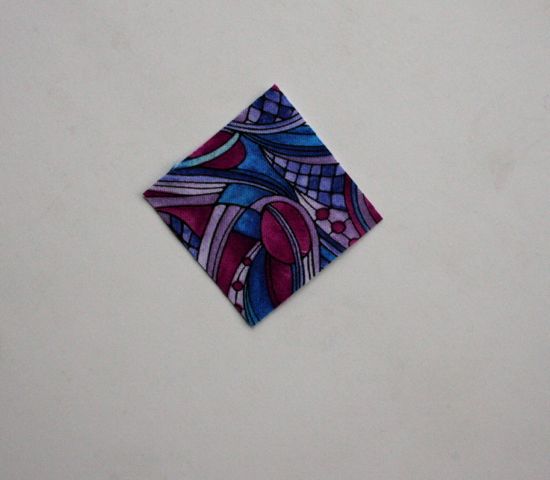 Start with a square. This one is 2 inches square. You can go bigger or smaller, as you like.
Start with a square. This one is 2 inches square. You can go bigger or smaller, as you like.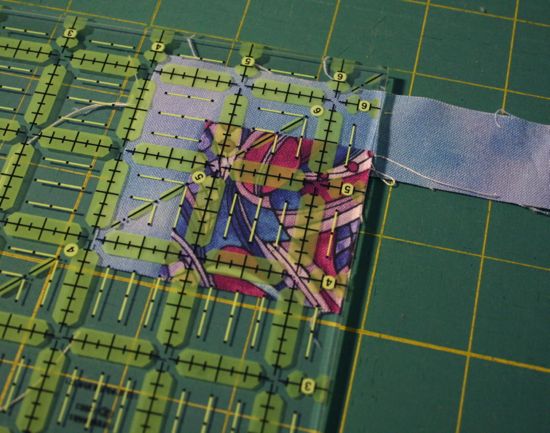 Keep adding the strip to each side of the center square, taking a moment between each addition to press and trim the strip as needed. Trimming as you go makes for a more improv feel while assembling the block and requires less planning and calculation. Be careful that you don't accidentally trim wonky and sacrifice your squareness!
Keep adding the strip to each side of the center square, taking a moment between each addition to press and trim the strip as needed. Trimming as you go makes for a more improv feel while assembling the block and requires less planning and calculation. Be careful that you don't accidentally trim wonky and sacrifice your squareness!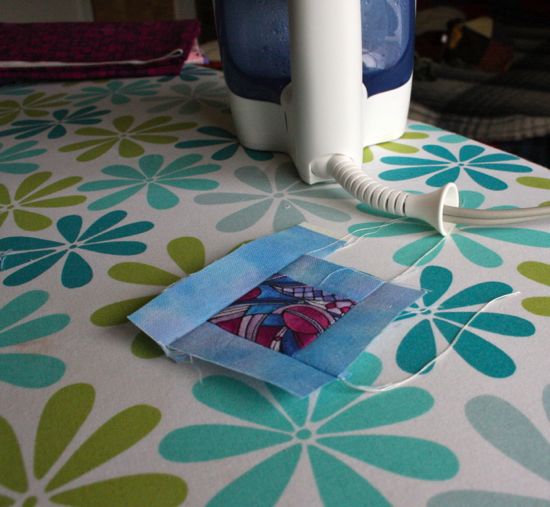 First round done! Now, repeat the last few steps for the next round. Choose your color, choose your log width, cut your strip(s), sew, press, trim, repeat.
First round done! Now, repeat the last few steps for the next round. Choose your color, choose your log width, cut your strip(s), sew, press, trim, repeat.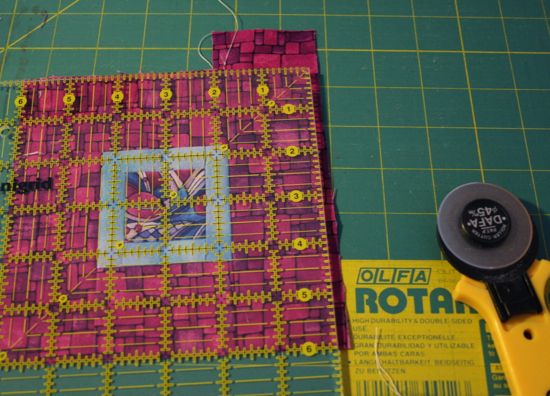 Don't forget to square up as you go. You want the whole block to stay square throughout the process (although wonky might be fun in a different project!)
Don't forget to square up as you go. You want the whole block to stay square throughout the process (although wonky might be fun in a different project!)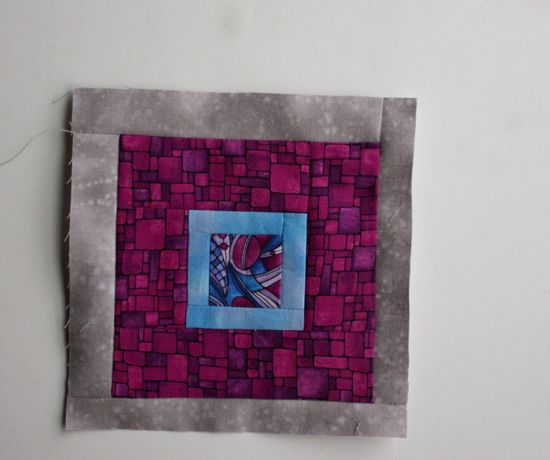 Three rounds done! With this gray "square", I added just a touch of irregularity. Two of my gray logs are just the tiniest bit thinner than the other two. It's a very subtle effect. If you choose to use it, be extra careful when you square up. It's really easy to trim off the extra width!
Three rounds done! With this gray "square", I added just a touch of irregularity. Two of my gray logs are just the tiniest bit thinner than the other two. It's a very subtle effect. If you choose to use it, be extra careful when you square up. It's really easy to trim off the extra width!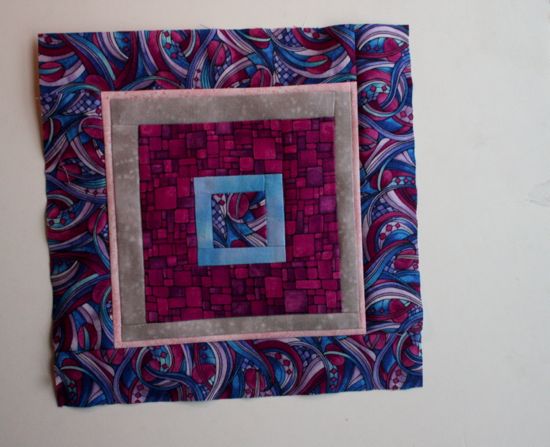 Five rounds done, and this block is about 10.5 inches square. That seemed a good place to stop.
Five rounds done, and this block is about 10.5 inches square. That seemed a good place to stop.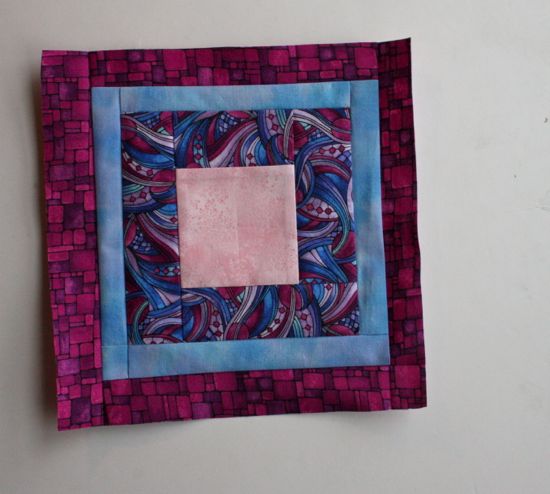 Same process, different block. This one started with a larger center square, used fewer rounds and finished about 8 inches square.
Same process, different block. This one started with a larger center square, used fewer rounds and finished about 8 inches square.